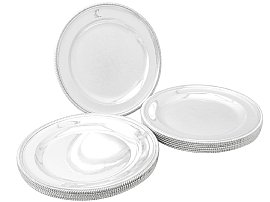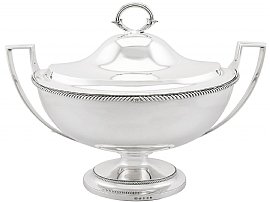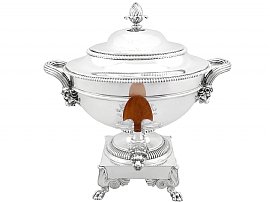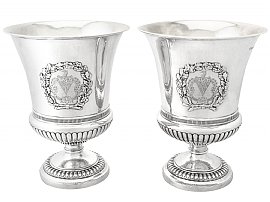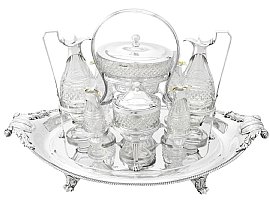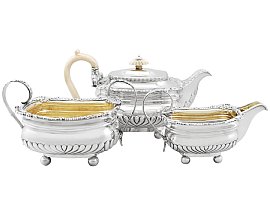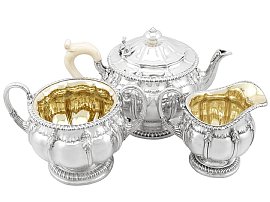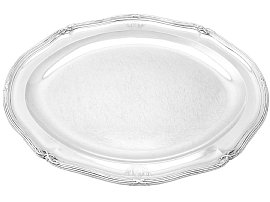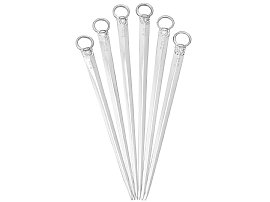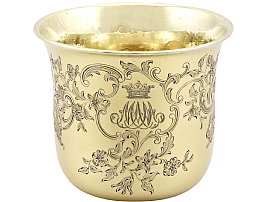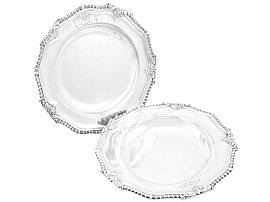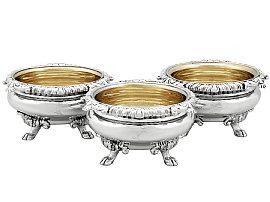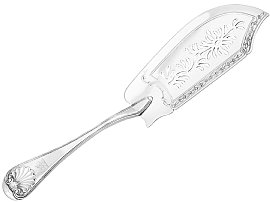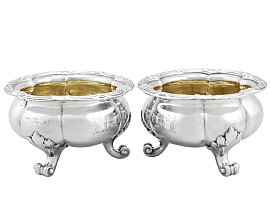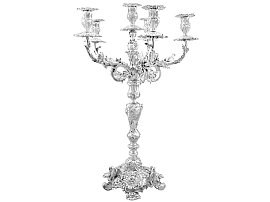Paul Storr
Paul Storr’s first maker’s mark was entered in 1792, and shortly afterwards in 1793 he began to use the ‘PS’ mark which he continued to use throughout his entire career as a silversmith, with only minor alterations on the original mark. Storr’s first business premise was registered in 1796, and he remained there for 11 years. This first incarnation of Paul Storr’s career as a silversmith produced some of his finest work, and it was here that he cultivated a reputation as one of London’s finest silversmiths. Storr’s early works were of the same exceptional quality as his later creations, although they featured more restrained designs, with classical aesthetics during the early Regency period.
His reputation was firmly established after his pieces were purchased by King George III and King George IV; this form of royal approval distinguished him as a superior silversmith. Paul Storr’s popularity among the landed gentry and aristocracy created a demand for his pieces which continues to this day.
Phillip Rundell, another London silversmith with a stellar reputation, had realised the potential for entering into business with Paul Storr, and pursued him for 3 years between 1803 and 1806 until Storr finally agreed to join Rundell’s firm. It is believed that Storr insisted that, by joining a larger firm, he would not lose his identity as a silversmith and that he would maintain a certain creative control of the pieces created under his name.
Phillip Rundell was already in a partnership with John Bridge, who brought with him royal connections through his cousin, who had befriended George III and told him of the quality of silversmithing performed by Rundell and Bridge.
Much of Storr’s notoriety and popularity is attributed to Phillip Rundell, of the retailing firm Rundell and Bridge. Rundell’s company obtained the Royal Warrant in 1797, and the firm therefore was easily thought to be the most prestigious silver retailers of their time. John Rundell’s nephew soon joined the firm as a partner, providing more capital and allowing the business title to be adjusted to Rundell, Bridge, and Rundell. As a team, Rundell, Bridge, and Storr had so much business that their team grew to more than 1,000 workers strong.
Storr took over a workshop on behalf of Rundell, Bridge and Rundell, running it as his own whilst taking and fulfilling orders from the parent company. It was agreed that the new business venture would be called ‘Storr & Co.’ and that Storr would continue his work at this new address, while fulfilling orders that Rundell passed to him. Many of the orders that followed from this new business partnership were for the royal and aristocratic houses of England, therefore firmly securing Storr’s importance as a silversmith and desirable silver maker.
Rundell’s success ultimately may have caused the demise of the business partnership, as commissions and orders reached a level that surpassed all expectations, Storr found himself acting as the head of a workshop which was mass producing pieces of silverware, rather than being a master craftsman of silverware.
It was perhaps for this reason that, in 1819, Storr made the decision to leave Rundell’s firm and open his own shop. It seems as though Storr felt that he had artistic control and could reconnect with the identity of what he believed to be his work, which hard arguably been somewhat lost fulfilling the orders for Rundell, Bridge, and Rundell. Here, his work became more naturalistic compared to the earlier, grandiose Storr pieces.
